Meltblown non-woven fabric production line
Best defender against viruses
Stable manufacturing of melt-blown nonwoven fabric plays a key role in effectively managing the COVID-19 pandemic. Both the masks made for medical personnel and for consumer purchase require a once-obscure material called melt-blown fabric. It’s an extremely fine mesh of synthetic polymer fibers that forms the critical inner filtration layer of a mask. Its porous composition enables the effective filtering of gases and liquids, as well as the absorption of potentially harmful airborne substances, allowing the wearer to breath while reducing the inflow of possible infectious particles.
Meltblown production line overview
Due to the Coronavirus pandemic, a new model of Taiwanese equipment was upgraded in 2020 to produce a mask filter material that is most effective against the COVID-19 Coronavirus.
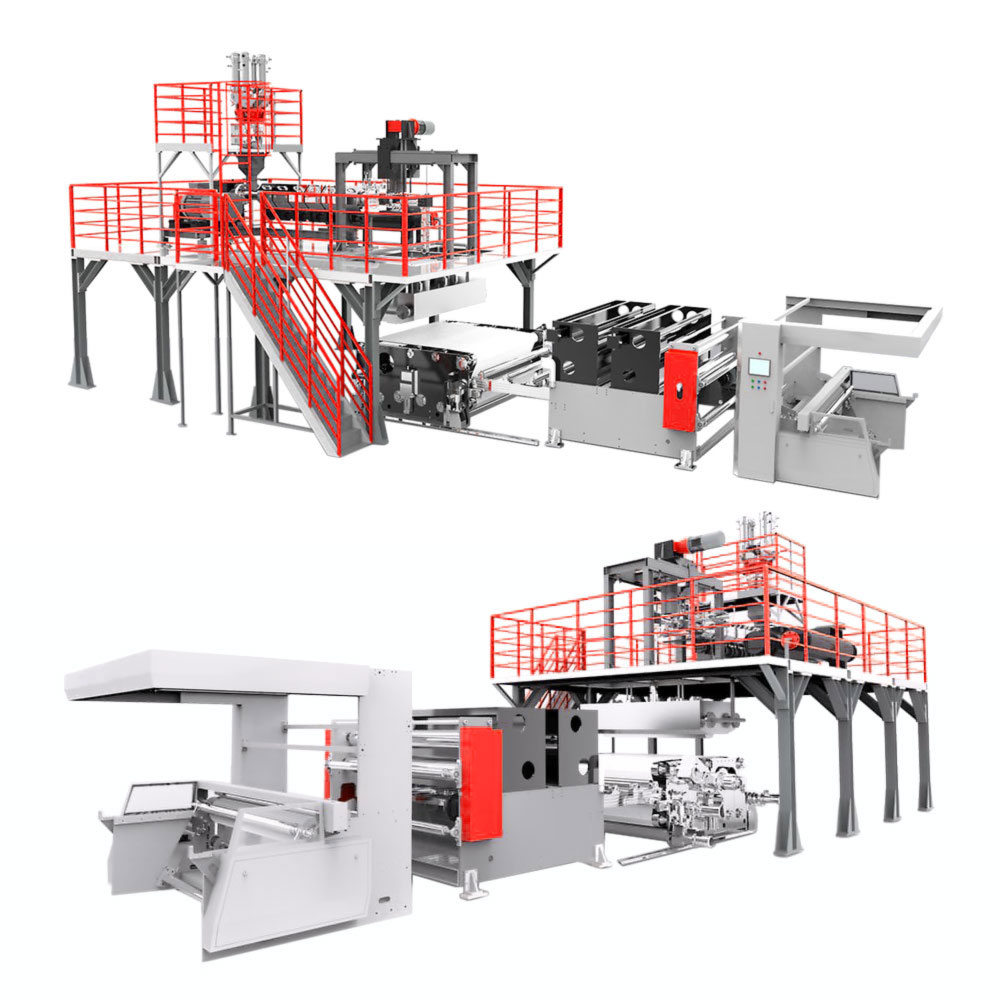
Equipment specification
| Parameter | Value |
|---|---|
| Material | Plastic polypropylene (PP) |
| T-die width | 1600 mm |
| Fiber fineness | 2 ~ 5 um |
| Production Capacity | 60 ~ 80 kg/hr |
| Total Power Consumption | approx. 480 kW |
| Practical Power Consumption | approx. 220 KW |
| Operation Voltage | 380V 3-Phase 60Hz |
Standard equipment
| Extruder | 1 set | |
|---|---|---|
| Screen changer | 1 set | |
| Gear pump | 1 set | |
| Meltblown Die (1600mm) | 1 set | |
| Auto feeding system | 1 set | |
| Aluminum web forming machine | 1 set | |
| Air heating system | 1 set | |
| Electrostatic electrets processor | 2 sets | |
| Automatic surface winding unit | 1 set | |
| Electricity control system | 1 set | |
Equipment dimensions
Equipment dimensions do not exceed L: 14500 mm × W: 5800 mm × H: 6200 mm.
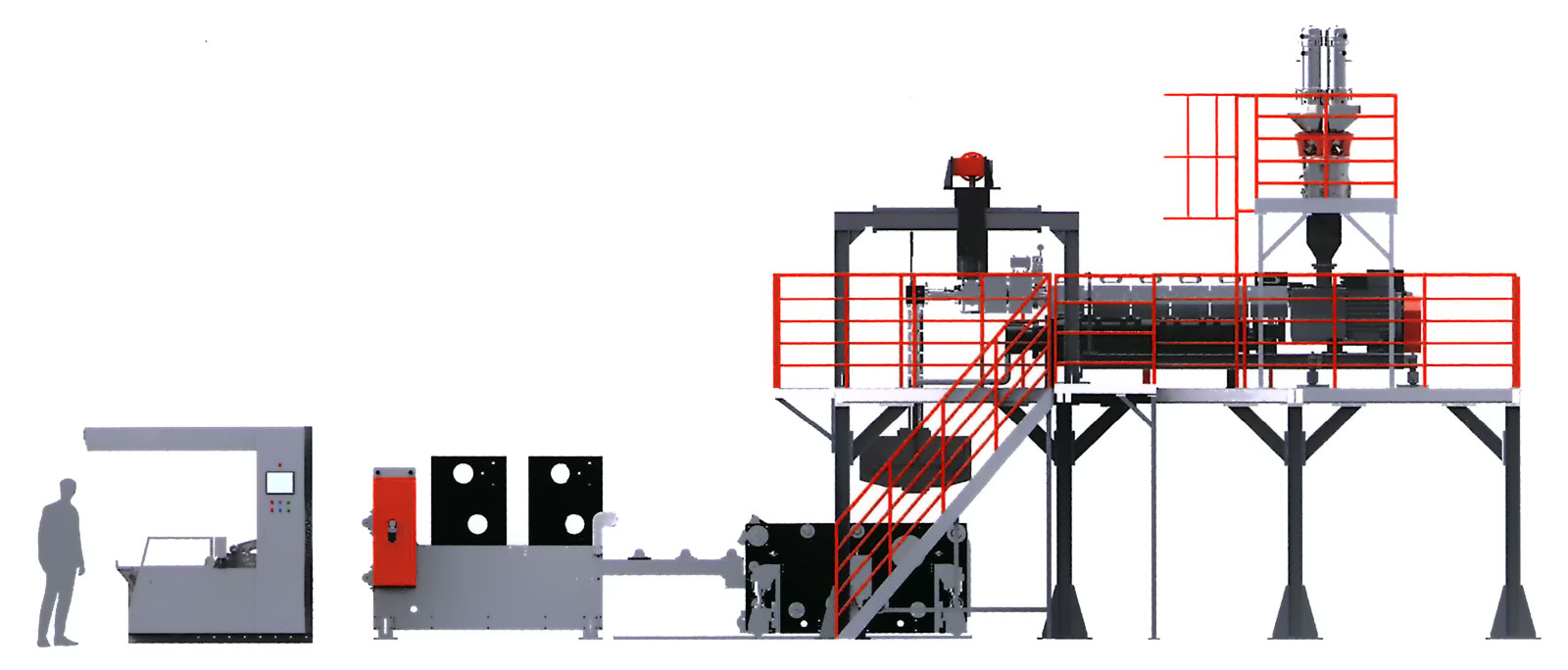
Working principle
Through a plate extruder, molten molecules are pressed into a high-speed stream of hot air, then the polymer melt is squeezed through the spinner of an ultra-thin nozzle to form extremely thin fibers and blow it horizontally onto a drum or vertically onto collector filtered nets. They fit into the ultra-thin fiber network structure.
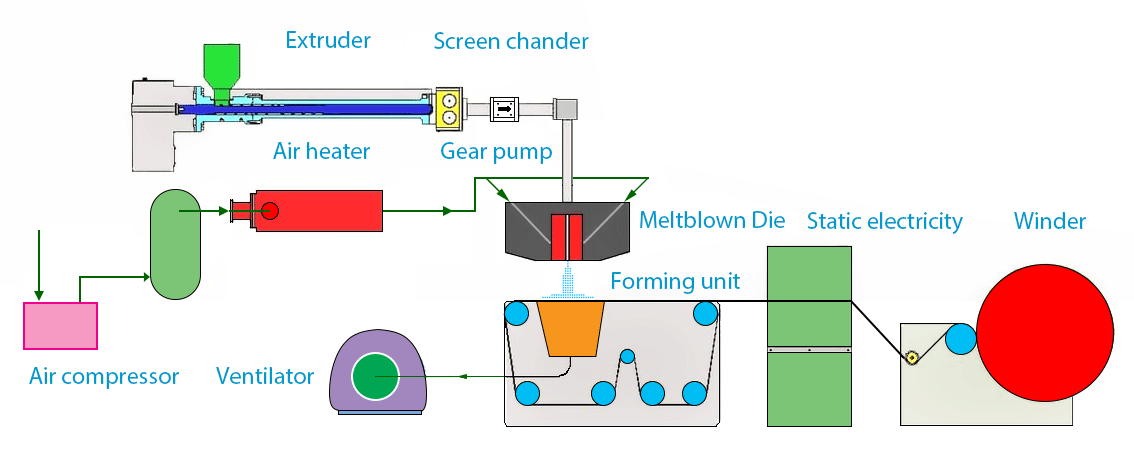
The ultrafine fibers of molten non-woven materials are ideal for composites requiring filterability, shielding, heat insulation and oil absorption, such as masking materials, air, liquid filtering materials, heat-insulating materials, insulation materials, soundproofing materials, environmentally friendly oil-absorbing materials, wiping cloth and other areas application.
Features of the applied technology
Coronaviruses, like other viruses, are tiny — far too small to get caught in most textiles. To prevent them penetrating a mask filter, engineers have to use various physical tricks. Most effective face masks based on nonwovens use meltblown nonwovens as the primary component.
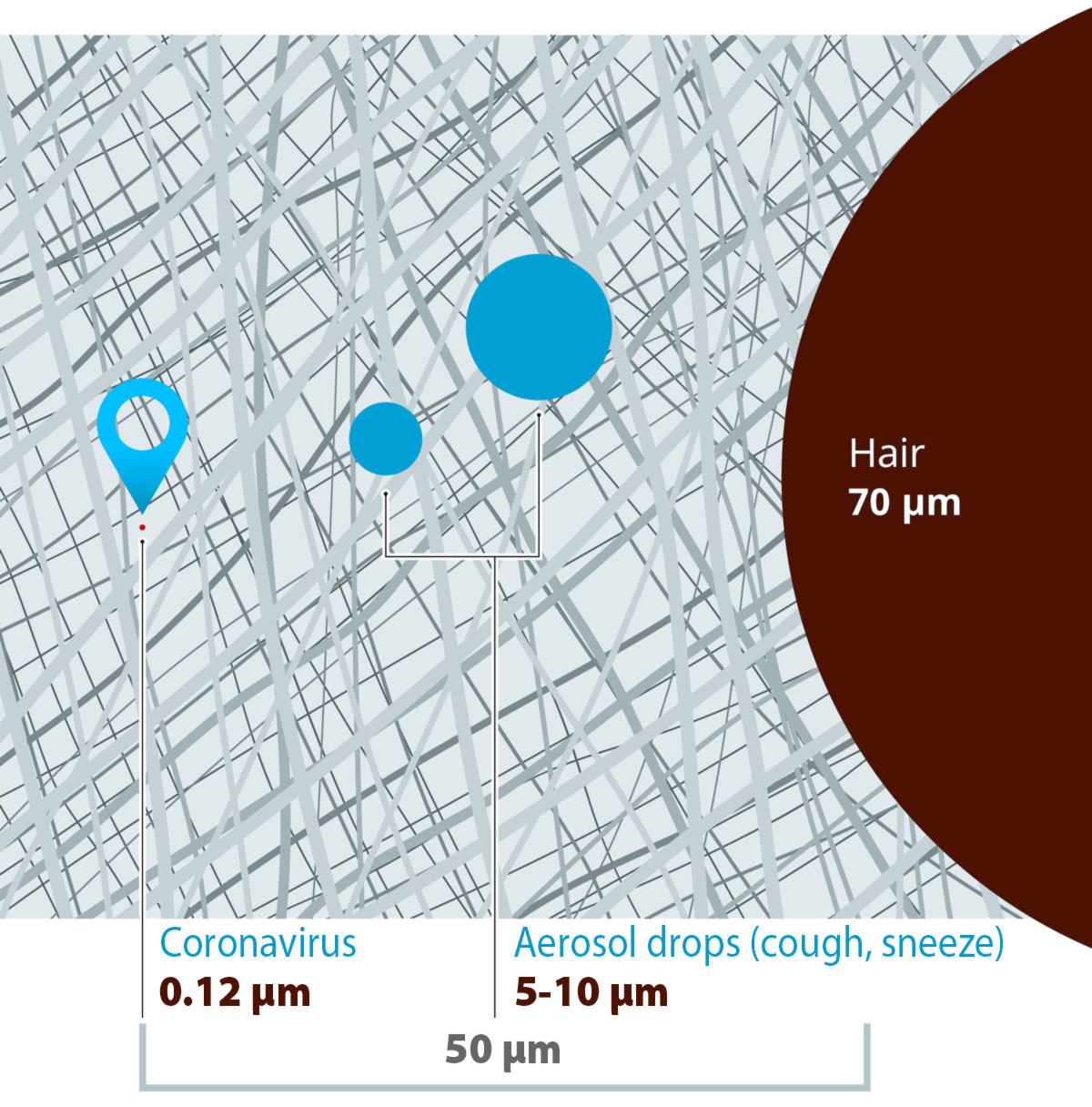
This is how even the smallest particles get caught in the filter fleece. Four physical mechanisms ensure that even tiny particles cannot pass through the filter fleece.
FIBER PARTICLE
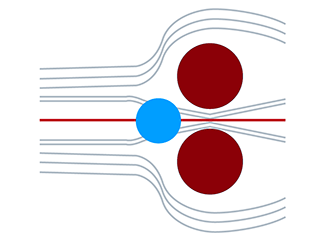
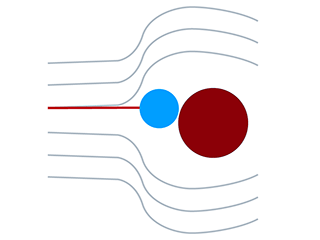



In the process of melt production, polypropylene is used as the main raw material for converting plastic particles into a non-woven fabric. The finished product is a molten non-woven fabric with extremely high elasticity and excellent absorption properties.

Using electrostatic electret technology, static electricity is attached to the fibers of the molten non-woven fabric, viruses and bacteria that penetrate the surface layer are adsorbed without increasing air resistance. Under the premise of reducing the load of use, the filtration efficiency of masks and other filtering products is significantly increased.
Product Features & Advantages
- Production of filter with high filtration efficiency. When melt processing, all threads are stretched across the entire width of the mold at exactly the same temperature. Uniform tension allows you to maintain the same high quality fiber throughout the fabric material.
- High performance. Depending on the diameter of the fiber produced, high productivity can be achieved. The polymer melt is removed through several rows of spinners, has high performance, low energy consumption, and also withstands higher spinning pressure.
- Maximizing production applications. Extremely high filterability, shielding, thermal insulation and adsorption make this technology applicable in all industries.
- Using extremely fine fibers to produce meltblown fabric. It has an ultra-thin fiber with shielding, filtering, oil-absorbing and heat-insulating properties. It has a wide range of fiber fineness and fiber diameters up to 2-5 microns. These ultra-thin fibers can increase the number and surface area off fibers per unit area and can be used as masking materials, air, liquid filter materials, heat-insulating materials, insulating materials, sound-proofing materials, environmentally friendly oil-absorbing materials and wipe cloth and other fields.
- Enhanced Protection with Electrostatic Electret. Without increasing the load of use, through electrostatic electret technology, static electricity is absorbed in molten non-woven fiber, it can absorb viruses and bacteria that have penetrated the surface layer, thereby improving the filtering ability of masks and other filter products.